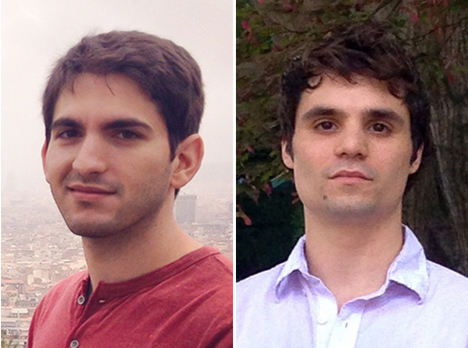 MD/PhD students Andrew Anzalone and Sakellarios Zairis combined approaches based in chemical biology, synthetic biology, and computational biology to develop a new method for protein engineering.
MD/PhD students Andrew Anzalone and Sakellarios Zairis combined approaches based in chemical biology, synthetic biology, and computational biology to develop a new method for protein engineering.
The ribosome is a reliable machine in the cell, precisely translating the nucleotide code carried by messenger RNAs (mRNAs) into the polypeptide chains that form proteins. But although the ribosome typically reads this code with uncanny accuracy, translation has some unusual quirks. One is a phenomenon called -1 programmed ribosomal frameshifting (-1 PRF), in which the ribosome begins reading an mRNA one nucleotide before it should. This hiccup bumps translation “out of frame,” creating a different sequence of three-nucleotide-long codons. In essence, -1 PRF thus gives a single gene the unexpected ability to code for two completely different proteins.
Recently Andrew Anzalone, an MD/PhD student in the laboratory of Virginia Cornish, set out to explore whether he could take advantage of -1 PRF to engineer cells capable of producing alternate proteins. Together with Sakellarios Zairis, another MD/PhD student in the Columbia University Department of Systems Biology, the two developed a pipeline for identifying RNA motifs capable of producing this effect, as well as a method for rationally designing -1 PRF “switches.” These switches, made up of carefully tuned strands of RNA bound to ligand-sensing aptamers, can react to the presence of a specific small molecule and reliably modulate the ratio in the production of two distinct proteins from a single mRNA. The technology, they anticipate, could offer a variety of exciting new applications for synthetic biology. A paper describing their approach and findings has been published in Nature Methods.
 MD/PhD students Andrew Anzalone and Sakellarios Zairis combined approaches based in chemical biology, synthetic biology, and computational biology to develop a new method for protein engineering.
MD/PhD students Andrew Anzalone and Sakellarios Zairis combined approaches based in chemical biology, synthetic biology, and computational biology to develop a new method for protein engineering.